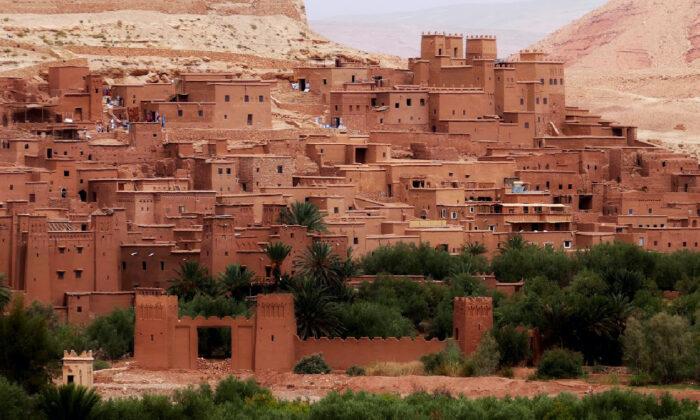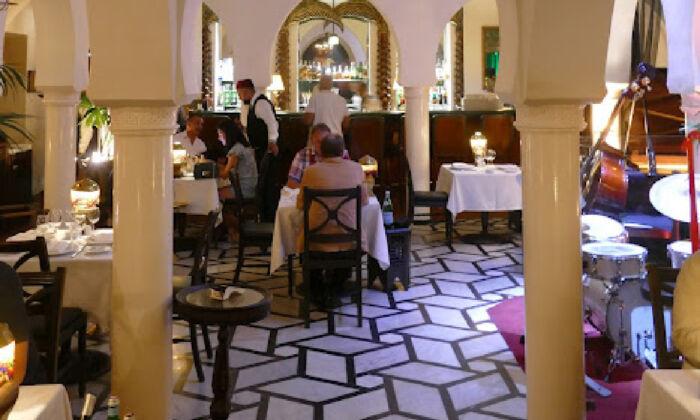My husband and I had gone to Richmond, Indiana, to learn about Black history, and we found what we were looking for. We toured the home of Levi and Catharine Coffin, Quaker abolitionists who helped some 2,000 slaves to achieve freedom, and we strolled along the Walk of Fame at Gennett Records, the first company to record Black entertainers. We drove to Longtown on the Ohio border, where free Blacks established a town that could be moved across the road to a different state if laws in one of them became too restrictive for African Americans.
Along the way we also found lots of surprises and much more that we wanted to explore. Richmond is a lot like other midsize communities in the Midwest with a grand Romanesque courthouse, a revitalized downtown, a historic railroad station and a lively past peopled with Native Americans, explorers, early settlers, and—as we had found out—runaway slaves and their abolitionist helpers. But the resemblance stops there, and every kind of traveler will find something new and unusual here to enjoy.
A good place to begin is at the Wayne County Historical Museum. The city was founded by Quaker abolitionists, so it makes sense that the museum would be housed in a former Friends’ Meeting House that is on the National Register of Historical Places. Over the years since its founding in 1930 it has been the recipient of heirlooms and memorabilia so that today it is a repository of a substantial number of objects that tell the area’s history.
Each fascinating exhibit follows another, all with connections to the county. One depicts the Palm Sunday 1968 downtown explosion that killed 42 people and injured many others. Others recognize early local businesses, such as the Starr Piano Co. and cars that were once built here. Black heritage has a presence, as do farming and motion pictures. Ralph Teetor, a local who invented cruise control despite not having the benefit of sight, is honored. The stunner here is that the museum has a 3,000-year-old male mummy in his painted coffin that was acquired in Cairo by world traveler and museum founder Julia Gaar.
Art lovers will want to see the Richmond Art Museum, with its impressive permanent collection of Indiana, Ohio and regional paintings. Housed within a public high school, it also hosts traveling exhibits and special events, such as plein air paint-outs. Workshops and classes here are led by professionals.
They—and everyone else—will also appreciate the vibrantly colored murals in the Historic Depot District and elsewhere that adorn the walls of many buildings, both inside and outside, large and small, busy and abandoned. The subjects they portray are serious and whimsical. One is a life-size train, another depicts the depot itself. Some honor the city’s history as “The Cradle of Recorded Jazz,” where the likes of Louis Armstrong, Jelly Roll Morton and Hoagy Carmichael recorded in Fred Gennett’s studio.
Others recall Richmond’s importance as the “Grand Central Station” of the Underground Railroad. Soldiers huddle together on the front of the American Legion building. Groucho Marx adorns one side of a tobacco shop with Lauren Bacall and Humphrey Bogart on the other—all smoking, of course. In nearby Cambridge City a mural recalls President Abraham Lincoln’s funeral train stopping there. Some 70 pieces now decorate the city with new ones constantly being added and old ones being restored.
Automobile enthusiasts will enjoy the Model T Museum, the largest of its type in the world and the headquarters of the Model T Club of America. On display are its 45 vehicles, some exhibited with mannequins in period dress to show when and how they were used. One of the two buildings contains a mechanics’ shop with tools used to repair Model T Fords when they were new and by club members still today.
Shoppers—especially if the love antiques—have come to the right place. Richmond’s Antique Alley is a treasure-trove for collectors, with some 5,000 square feet of floor space and 21 dealers. In nearby Cambridge City are 10 distinctive shops and malls within a two-block area. Downtown boutiques purvey more modern offerings.
The great outdoors beckons here, too. When the weather allows, bike or walk on the Cardinal Greenway, swim and picnic at the Middlefork Reservoir, and send the kids to play at Nature Playscape, where natural materials provide a creative and interactive play experience.
Everybody likes to eat, and the Chocolate Trail, where you can taste samples from various chocolatiers, is a must. And when it’s time for a meal you have several options, too. Legends, established in 1858 and the second-oldest continuously operating bar in Indiana, has some of the original fixtures and serves great food. In Centerville 5 Arch Brewing offers beer, cocktails and steaks, but best of all they treat their employees fairly and give part of their profit back to community organizations. Little Sheba’s is another good meal choice, but save some room so that you can walk across the street for dessert at Ullery’s Homemade Ice-Cream.
When You Go
For more information: www.visitrichmond.org









